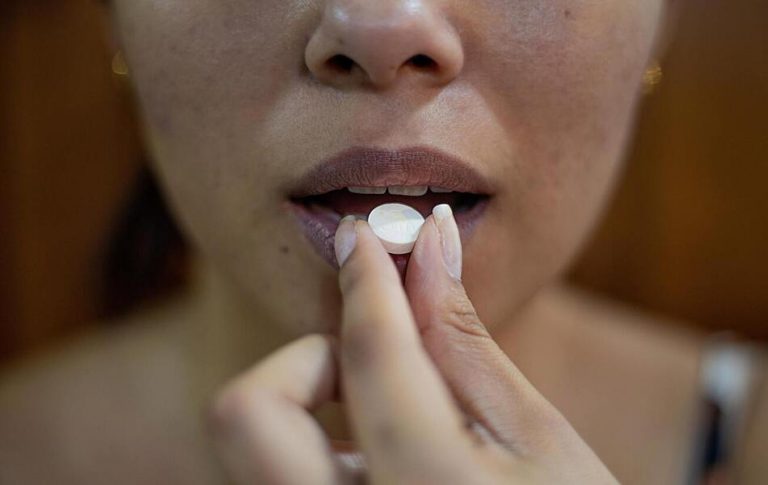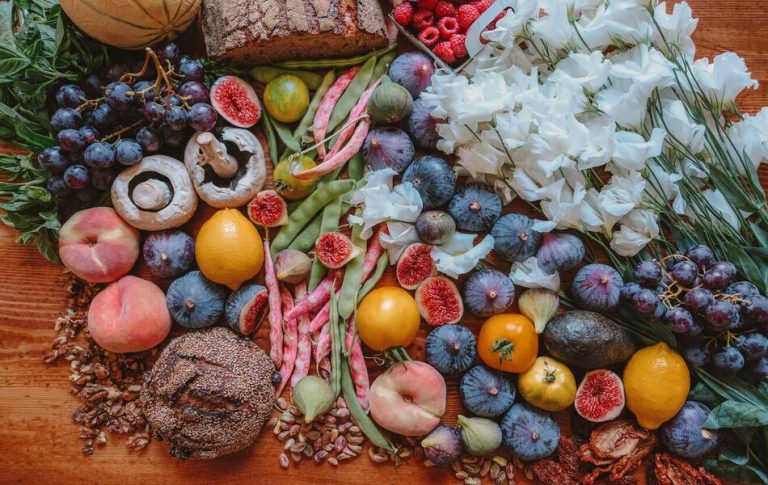29 Beauty Industry Statistics & Facts for a Radiant 2024

The global beauty industry is worth billions of dollars and is growing rapidly with each passing year. As beauty industry statistics show, this market is always ready to adapt to new trends. That is one of the reasons why it has managed to survive and thrive even amid economic recessions.
What does the future look like for the beauty industry?
To find out, we compiled the most interesting and relevant stats, as well as some fun data on the history of beauty and its popularity across the world. Let’s dive right in!
Key Beauty Industry Statistics and Facts to Impress You
- The global beauty industry is a growing, billion-dollar market.
- The global K-beauty market will grow by an impressive 11.3% from 2019 to 2026.
- L’Oréal, generating more than $30 billion in annual sales, is the world's leading cosmetic company.
- Beauty industry stats show that 70% of men use sunscreen or sun protection.
- The average woman spends more than $3,000 per year on personal appearance.
- Makeup sales may be down, but skincare and haircare lines are thriving.
- The anti-aging segment will grow at a rate of 3.8% from 2020 to 2027.
- Technology is taking over the beauty industry.
- CBD cosmetics is another one of the beauty industry trends.
- An astounding 70% of female consumers aged 40 and over want more products for women their age.
Crucial Beauty Industry Statistics
The stats below are likely to spark your interest. Whether you are a shopper with a curious mind or a beauty specialist—there is something of value to everyone.
1. The global beauty industry is a growing, billion-dollar market.
(Business Insider)
The value of the global cosmetics market in 2019 was $532 billion. What’s more, estimates showed promising growth in the coming period. The growth has links to new trends. Those are transparency, sustainability, and targeted pricing to appeal to thrifty Millennials and Gen Z.
2. Oceania and Asia are the biggest consumers of beauty products.
(World Atlas)
Accounting for 39% of the market, consumers in Oceania and Asia are the biggest cosmetic product users. Based on 2020 cosmetic industry stats, North America comes second with a 25% share, followed by Europe, which makes up 24% of the global beauty market.
3. The UK consumer expenditure goes up to £32.5 million.
(Alioze)
The UK ranks third in terms of beauty products consumers, preceded by Germany and France. Toiletries are the best-selling products among Brits, followed by skincare products (22.3%), perfumes (19%), and haircare items (17.9%).
4. Beauty industry analysis reveals that India’s cosmetics market will exceed $20 billion by 2025.
(Fashionista)
There are several reasons why India might become the next big thing on the global beauty care scene. First and foremost, the country’s economy has done better in recent years, which enhanced the nation’s spending power. And this is reflected in the beauty industry—more and more women are spending money on makeup. Also, online shops like Nykaa and video blogs are helping India’s beauty industry flourish.
5. The African beauty and personal care market is increasing between 8% to 10% every year.
(African Business Magazine) (Statista)
Thanks to a growing population, rising middle class, and structured distribution channels, the African beauty industry growth is faster than the global average—8% compared to 4%. In South Africa alone, the beauty and personal care market will reach $6.16 billion by 2024.
6. The global K-beauty market will grow by an impressive 11.3% from 2019 to 2026.
(Fashion Network)
According to projections, the Korean beauty industry will reach a whopping $21.8 billion in five years. Sheet masks, making up a quarter of all K-beauty products, will remain in the lead. That said, cleansers will record the highest CAGR. Now, there are several reasons for the impressive Korean beauty industry growth rate. Among them are South Korean music and films’ popularity and the country’s high standards in beauty.
7. L’Oréal, generating more than $30 billion in annual sales, is the world’s leading cosmetic company.
(TechNavio)
L’Oréal has expanded into almost all sectors of the beauty industry with cosmetic brands like Maybelline. It has also launched luxury brands such as Lancôme and Giorgio Armani. What’s more, the company invested in haircare products—Kérastase and Redken lines. In terms of beauty industry revenue, Unilever, the company behind Dove, Axe/Lynx, and Vaseline, ranks second. Finally, Estée Lauder, which holds over 25 brands in 150 countries, rounds off the world’s top three beauty companies.
8. Sephora is the number one beauty retailer in the world.
(Interbrand)
In the battle between Ulta and Sephora, the latter has emerged victorious, a 2018 beauty industry report shows. With total revenue of $3 billion and over 100 new shops opened the same year, Sephora is the undisputed champion in the cosmetic retail game.
9. The global natural cosmetics market will go up from $34.5 billion to around $54.5 billion by 2027.
(Statista)
Now, what do these projections regarding the natural personal care products industry and its growth show? In a nutshell, they display how much consumers value organic cosmetics. Unfortunately, such preferences also open up the market to companies making fraudulent claims. That is why it’s important to ensure that the product you’re buying is truly natural. In other words, double-check if the ingredients and packaging are sustainable and organic.
10. Online sales of cosmetics grew by 30.5% in 2019.
(Digital Commerce 360)
Despite the steady growth of the online segment in the past three years, the penetration of 9.3% is still small. The figure is even smaller when compared to the 81% market share of brick-and-mortar stores. Personal care industry statistics and surveys state that the main problem lies in testing the products in person. As many as 46% of users say they still want to see and try out the items in person. What’s more, 18% prefer to get advice from an in-store assistant on which products to purchase.
11. The average woman spends more than $3,000 per year on personal appearance.
(Byrdie)
How much money is spent on beauty products each year? Women spend an average of $3,756 a year, or $313 a month. That’s $225,360 of a lifetime investment — the same amount it would take to pay for four years of college tuition.
12. Men spend an average of $244 a month on their appearance.
(Byrdie)
Although they spend less than women, men’s expenditure on physical appearance is no small sum. In fact, estimates show that men spend $175,680 over their lifetime, most of which goes to the purchase of facial moisturizers. Other products men spend money on include hand creams, shaving products, and various supplements.
Beauty Industry Statistics by Segment
The beauty industry consists of six segments. Those are skincare, haircare, makeup, perfumes, personal care, and oral cosmetics.
Let’s take a closer look at the most relevant data on each segment.
13. The global skincare market was worth $145.3 billion in 2020.
(GlobeNewswire) (Beauty Packaging)
The global market value for skincare will reach $185.5 billion by 2027, growing at a CAGR of 3.6%, stats on skincare market size reveal. Unlike other segments of the beauty industry, the coronavirus actually spurred skincare sales. In other words, 53% of women changed their skincare routine due to wearing masks and the blue light exposure.
14. Market analysis shows that the makeup segment will decrease.
(McKinsey & Company)
People continued wearing masks after returning to work — one of the reasons for the slow recovery of the makeup industry. The makeup industry statistics also show that the one section expected to see an increase is above-the-mask treatments. This sector saw a 150% monthly rise in China during the second week of February 2020, i.e., once the Chinese saw the restrictions lifted.
15. Makeup sales may be down, but skincare and haircare lines are thriving.
(McKinsey & Company)
Based on the data from Amazon, the makeup industry revenue is going down, with the sales of products in the US recording a slight decrease. However, other products are going up. Nail care products are up by 218%, hair coloring by 172%, and bath-and-body products by 65%. Europe is also witnessing an increase in the sale of self-care products, such as candles and detox items.
16. The flavor and fragrance market in North America landed at $4.5 billion.
(Statista)
According to the 2019 data on cosmetic industry revenue, the value of the US and Canada’s perfume market was at almost $5 billion. The segment will increase to $5.9 billion by 2025, showing a growing interest in the use of colognes, perfumes, and fragrances. The figure comes as no surprise seeing how 92% of women in the US wear perfumes and 41% use them every day.
17. The global haircare market should increase to $102 billion by 2024.
(Statista)
The Asia Pacific region is the biggest haircare market in the world. That said, the US is the most profitable—it generated $15 billion from the $85.5 billion-worth global market. These haircare industry statistics are not surprising in light of the growing number of US users. Surveys show that more than half of Americans use haircare products, while 34% of women and over 50% of men wash their hair every day.
18. The anti-aging segment will grow at a rate of 3.8% from 2020 to 2027.
(GlobeNewswire)
The segment doesn’t just incorporate anti-aging creams. It also includes products related to moisturizing the skin and slowing down the aging process, such as hair products, eye care, and serums. Anti-aging industry statistics and facts show that the product variety drives the growth in this segment. Another driving force here is the growing number of aging population across the world.
Beauty Industry Trends
The beauty industry is ever-changing as new fashions and crazes appear every year. The good news is that cosmetic brands are always ready to accept changes and market new fads accordingly. Let’s check out some of the prevailing trends for this year.
19. Technology is taking over the beauty industry.
(TechNavio)
More and more brands are incorporating technological devices into their portfolio. Those technological advances often include 3D scanning devices, together with accompanying apps. Other new beauty industry trends of 2020 included the development and sales of male personal care products. Finally, another hot topic these days is gender-neutral makeup.
20. Premium cosmetic care products are another trend in the beauty industry.
(TechNavio)
This segment accounted for over 23% of the global beauty and personal care industry last year. Premium cosmetics enable users to get the most value from luxury makeup and personal care brands. What’s more, top-quality products tend to highlight convenience and ease-of-use. As companies accept this new trend, the market for premium products will grow to $44.2 billion by 2024.
21. CBD cosmetics are another one of the beauty industry trends on the rise.
(Mugglehead.com)
CBD has emerged to meet demands for natural skincare and beauty products. According to the latest reports, quality CBD creams and lotions could soon account for a whopping 10% of the global skincare market. In other words, it’s estimated to reach $959 million by 2024 as the sector gets more regulated and welcomes new players.
22. Four in five consumers said they bought a cosmetic product after seeing it recommended on social media.
(Alioze)
Nowadays, more than half (56%) of women follow beauty influencers on social media. What’s more, beauty addicts spend at least two hours searching for news in the beauty sector. Following this, beauty industry statistics for 2022 point to a somewhat expected tendency. To put it simply, social networks will continue to have an enormous influence on the beauty industry.
23. As many as 70% of female consumers aged 40 and over want more products for women their age.
(CB Insights)
A majority of women over 40 want more products for perimenopausal and menopausal women. Unfortunately, boomers, and older generations in general, are often forgotten. That is because most marketing strategies focus on Millennials and Gen Z. That said, boomers are one of the most affluent generations, and they definitely deserve the attention of beauty brands.
24. Brands were incorporating pollution protection in their products, in line with skincare trends for 2020.
(Harper’s Bazaar)
Pollution is the second biggest danger to skin, right after sun exposure, something beauty brands are becoming aware of. Liberty London increased the sale of pollution-battling products by 57% in 2019. At the same time, Clé de Peau Beauté plans to add pollution defense to its flagship product—the Correcting Cream Veil.
Some Fun Beauty Industry Facts
Last but not least, we’ll introduce some fun and unusual facts about the industry, both present, and past.
25. In India, expiration dates aren’t necessarily included on the packaging.
(The Health Site)
When it comes to certain products in smaller quantities, it’s not unusual for the expiration date to not be stated on the product’s packaging. It is especially true in India. In this case, it’s useful to keep this in mind—you can use most skincare products for about two years. Still, be careful with eye makeup products, such as eyeliners, mascara, and eyeshadows. We suggest that you change the products more often to avoid possible infections.
26. Beauty industry stats show that 70% of men use sunscreen or sun protection.
(Forbes)
As it turns out, a third of American dads and a fifth of childless male Americans say they have a skincare routine. According to them, they do care about the use of proper anti-aging cosmetics. What’s more, 70% of examinees confirm that they use sun protection products. About two-thirds of the participants use moisturizers and other skincare products. These figures oppose the widespread presumption that men neither care about their skin’s appearance nor boost the skincare industry growth.
27. Women in the Middle Ages would remove their eyelashes and eyebrows.
(Bustle)
They didn’t do it to save on mascara, though. In the Middle Ages, the woman’s forehead was considered the best and the sexiest part of her face. That is why women would often remove their eyelashes and eyebrows to accentuate this part of their body.
28. Men used pigeon droppings on their heads in an attempt to cure baldness.
(Blossom)
Historic beauty industry facts reveal that women are not the only slaves to beauty. In Ancient Greece and Egypt, men used to rub pigeon droppings and nettles or a blend of lead, onions, honey, and alabaster on their hairless heads. Unsurprisingly, neither of the practices was proven successful. Thankfully, modern medicine has come up with a safer alternative to treat hair loss today.
29. The term “makeup” was actually invented by Max Factor.
(Max Factor)
Today, Max Factor is a well-known producer of quality makeup at an affordable price. It is most famous for its top-notch foundations, mascaras, and compact powders, makeup industry facts show. Before becoming one of the most remarkable names in the cosmetic industry, Max Factor actually started as a small company. Back then, it manufactured paint to enhance actors’ facial features. What made the company so successful, though, was the reformulation of the paint. In other words, the company turned it into a thinner consistency fluid, which became its first foundation.
Wrapping It Up
Beauty has always been and will remain one of the first things people notice. It makes absolute sense that consumers would spend thousands of dollars a year on the best, most effective, and cleanest cosmetics. It also falls in line with expert estimates on the beauty industry worth and growth. We hope that our analysis of the most important facts and stats has given you more insight into how the industry works.
FAQs
How much is the beauty industry worth in the US?
In 2019, the value of the US cosmetics industry was $49.2 billion. Of all the six segments that make up the beauty industry, skincare is the largest. The highest revenue was generated from the sale of foundations and mascara. Both were the most profitable product lines of the US market in 2018.
Is the cosmetics industry profitable?
Despite estimates that the beauty industry could fall by 30% in 2020, the cosmetics market seems to be adapting to the changing needs and trends. More and more brands are embracing virtual tools and tech advances. They are also focusing more on “clean” products, balance, and personal care. Simply put, the cosmetic industry is still profitable for those brave enough to accept innovation and adapt to changes.
Is the beauty industry growing?
An analysis of the beauty industry between 2004 and 2019 shows that the market grew from 3.4% in 2004 to 5.5% in 2018. The lowest growth was in 2008 and 2009, caused by the global economic recession. Despite being hit by another crisis today, i.e., the COVID-19, experts believe the industry will bounce back. The hopes are high following the increased implementation of digital tools.
Who buys the most makeup?
According to analysis, millennial women spend the most on cosmetics. Millennials are twice as likely to buy more than 10 types of products a year than other age groups. In fact, heavy buyers, defined as those that purchase 10+ products a year, make up 29% of the buyers, while millennials account for almost half of them, beauty industry statistics reveal.
List of Sources:
About the Author
Warning: Undefined variable $verdict in /home/602518.cloudwaysapps.com/scfpygvrcj/public_html/wp-content/themes/medalerthelp/template-parts/toc.php on line 23






